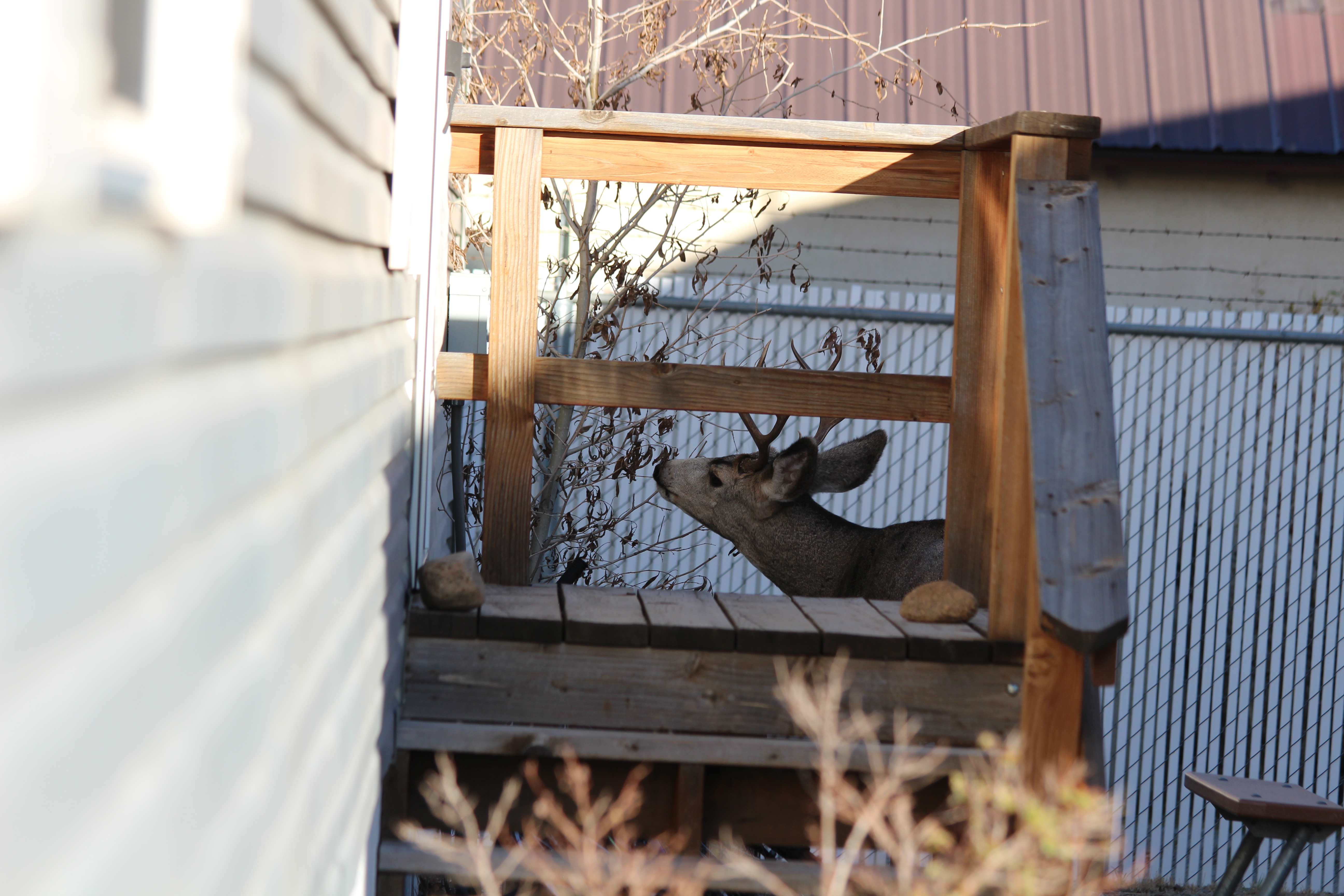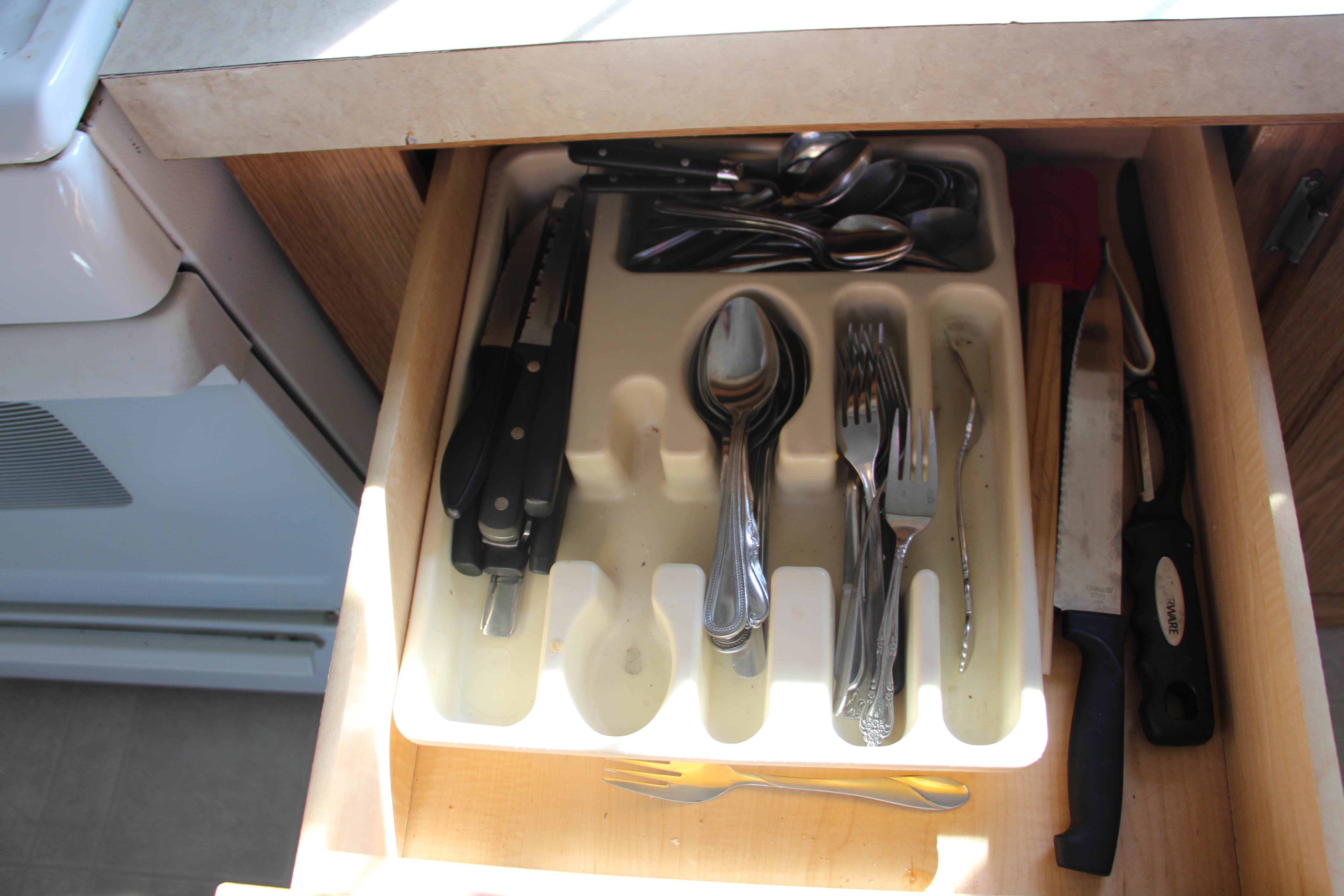I am now at the close of my internship here in Carlsbad, New Mexico, and it has been filled with ups and downs. Although leaving will be bittersweet, I must say that this month especially has been an incredible roller coaster ride that I think I am ready to get off of.

The normal scenery of a field day in the sand dunes ecotype of late September. Photo taken by B. Palmer
Where did I leave off…oh yes, what better place to pick up what I have been up to than that of the Seeds of Success collections that have finally matured into existence. Like I mentioned, Carlsbad got a bout of a very late rainy season, but it came nonetheless. With this precious rain, we were blessed with fields of wildflowers and the emergence of late summer grasses. Oh we have done so many collections in the last month! To date we have done 39 collections; a few months ago we were not even sure we would hit 30. We are even planning on nearly 10 more in the next week! AND we will be missing out on a lot of collections because the internship is ending in merely a few weeks.

The dunes were absolutely covered in little white and yellow flowers. I did a collection of the little white ones, Melampodium leucanthum. Photo taken by B. Palmer

I became the human pollinator on a collection day in the gypsum soil walking through snakeweed (Gutierrezia sarothrae) and glowworts (Sartwellia flaveriae)! Photo taken by B. Palmer

This is CLM intern Meridith McClure, excited to be collecting Oenothera elata near the Black River. Photo taken by B. Palmer
Because we were all the sudden less stressed about getting to our goal number of collections, Meridith and I decided it would be good to go out with other departments to get a sense of other things we can be a part of working for the BLM. We were fortunate enough to be invited out on a bat survey! From the cave and karst department, we went out with the “Living Legend,” BLM resource explorer Jim Goodbar. This was one of the men that took us out caving on our first week, and we were excited to go out again with him. We went to a little karst feature on nearby BLM land named “Tea Kettle” at dusk of one evening after a long field day, and waited near the cave entrance with our clicker counters as the sun went down. As the group of us waited, Mr. Goodbar gave us tips to counting bats as the emerge from the cave to feed. He mentioned that often times the bats come out flying in such large groups it can be difficult to count, so he estimates them by 5’s or 10’s as they come. As we waited, the desert sunset came and went, and it continued to get darker. We got a little nervous that we would miss the bats, as we had only seen a few scouts fly out just before it was nearly dark. However, our patience was rewarded with thousands of bats that flew out of the little cave. My, it was difficult to count, but quite a sight to see! After about 30 minutes of counting, we stopped and compared numbers. The group of us ended up counting about 6,000 bats! What a feat! This bat emergence is no comparison of the hundreds of thousands that come out at the Carlsbad Caverns (if you ever get the chance to see you should), but it was still an amazing part of this internship that I am happy to have been a part of.

The group of us patiently waiting for the sun to set and for the bats to emerge. Photo taken by F. Banos

We had a wonderful photographer of the office along with us for the survey. Turns out we were counting a species of the Molossidae, likely Mexican freetail bats. Photo taken by F. Banos
This month we were also put into touch with Guadalupe Mountains National Park, in Salt Flat, Texas. The Guadalupe mountains is a small range goes from Southern New Mexico and dips into Western Texas (fun fact: the tallest point in Texas is Guadalupe Peak at 8750 feet, and found in the park). They were gracious enough to let us collect for SOS in the park, as long as we followed their requests: We were only to collect from large populations that we would not impact the ecosystem or populations in any way (which is SOS protocol anyway), and that we collect enough that they can take back the extra to store for their own restoration uses. We found this to be a very beneficial partnership for a number of reasons. The Guadalupe mountains features unique ecosystems of the Chihuahuan Desert, from salt basins, to riparian rocky drainages, to shortgrass prairie. We are also proud to be partnering with them because there is currently very little collaboration between the National Park Service and Seeds of Success. We are very happy to find a partner that has lots to offer to the native seed initiative of SOS, and is also happy to be collaborating with us.

Some Agave along the trail of McKittrick Canyon in Guadalupe Mountains National Park. Photo taken by B. Palmer

We were scouting for potential populations to collect from in the Park when we stumbled upon a bunch of desert ferns! Photo taken by B. Palmer

The grass, Muhlenbergia emersleyi, was found in McKittrick canyon and became one of our collections from the Park, also a collection I did on my own. Photo taken by B. Palmer
We have done two collection days out of three so far at Guadalupe Mountains National Park, and the second day was far more memorable. I ended up getting three collections on my own, after Meridith had called in sick that day. Not only that, but I walked out of my apartment to go to work that morning and it was thundering with pouring rain. It did not deter me, however, and after a quick look at the weather of the National Park went on ahead to collect. It was a foggy, cool, and damp day, but in the end made for a rather enjoyable collection day. The trail of McKittrick Canyon was peaceful, and the air was cool and fresh. My fingers cold and the fruits wet, I still was able to manage three collections that day, all on my own.

The morning was cool, damp, and foggy in McKittrick Canyon. However, it made for a rather pleasant hike up to the collection areas. Photo taken by B. Palmer

The seeds were soaking wet when I collected them, and I ended up having to lay them out to dry overnight…we don’t want any moldy unviable collections! Photo taken by B. Palmer
Oh, I have an update on the pressed cactus! In my last post, I talked about successfully pressing cactus, and what a painful and tedious job it was. Well, after continuously changing out blotting paper, and cardboard in the press, a few weeks into the drying process I found out that ALL the cacti collections molded! Mold to the point of throwing everything away and forced to try again. All that hard work and handfuls of glochids did not matter, and had to be thrown out. We decided to be more cautious the second time around. We went and collected even more specimens, and this time, handled everything very carefully. After cutting the cacti in half and cautiously scooping them out, we laid them out in the sun to dry before pressing.

The last time we cut open the cacti to press, we did it inside at my desk…and I am still finding glochids everywhere! This time we worked from the back of our BLM truck, to avoid bringing in any unwanted prickly’s! Photo taken by B. Palmer
While they were laying out in the sun, we got word that the BLM fire crew had a dehydrator that we could use! They typically use it to determine the moisture content in grasses and figure out the fire danger potential in given areas. I was a little skeptical at fist, having dried specimens in an oven before in school. I was warned back then to never leave specimens in an oven that was too hot or for too long, or else they may burn to a crisp. When I asked how hot this oven would get, I was reassured and told that they leave plants in there up to 24 hours without any issues. With this said, I assumed it would be a low heat and we were excited to use it. It turns out I assumed wrong. After leaving the cacti specimens in there no more than a few hours, we checked on them to see how they were drying. Low and behold, instead of dried-up cactus we were hoping for, had remnants of what used to be cactus…now biochar. Turns out that oven gets to be pretty hot! Once again we were hit in the face of yet another silly trial and error moment. We will be attempting to press cactus for a third time in the next few days, one last hoorah of drying specimens for the collection. The first try was too moist, the second too dry, so the third try should be a charm and just right…right?

Here we have biochar cactus; an unfortunate discovery on take #2 of pressing cactus. We will be trying again…with more expertise on take #3! I wonder if other people have the same issues we have pressing cactus, or if it is just us and our inexperienced ways…Photo taken by B. Palmer
On that note I find myself at the end of my internship, merely two weeks away from finishing. This is were the post started, and where everything is coming to a close. I cannot lie, this has been the longest five months of my twenty-six years; the craziest year of life yet. The things I have done in a single year seems absolutely unreal. I acquired my undergraduate degree. I worked my first job remotely close to the field I want to pursue, at the Denver Botanic Gardens. I was accepted into this internship. I got to spend a week in Chicago at a workshop to learn how to do this job well. I spent one crazy, dry, hot summer working in the Chihuahuan Desert with the Bureau of Land Management. I was fortunate enough to spend some time in Savannah, Georgia at the Botany 2016 Conference. I got married to my rock, my high school sweetheart, the one and only love of my life. And after even all of that, I came back to the little gas and oil town of Carlsbad, NM in the Chihuahuan Desert to finish out this internship. I learned all sorts of trades of the office, from caving and bat surveys, to soil erosion control and wildlife water maintenence. Better yet, I am proud to say I was a part of something bigger, working with Seeds of Success. Every collection became more rewarding than the next. In the end, this internship has probably been the most mentally challenging thing I have ever done. Yet, I don’t regret this exhilarating experience that I have been a part of the last five or so months. I will warn you, if you are thinking about applying to the CLM, or becoming a future Carlsbad intern, it is not easy. It is also not meant for everyone; it takes a special kind of person to pursue this field. But it will also be an experience of a lifetime.
“Travel is fatal to prejudice, bigotry, and narrow-mindedness, and many of our people need it sorely on these accounts. Broad, wholesome, charitable views of men and things cannot be acquired by vegetating in one little corner of the earth all one’s lifetime.”
I come back to this wonderful quote by Mark Twain that I mentioned in one of my earlier blog posts because I still believe it is something that everyone should experience. It is important to see the world, make your own opinions, learn what is out there for yourself…even for an introverted, OCD, and even at times socially awkward hermit such as myself. This internship has helped me get out of my shell and explore, even if just a little.
If you ask me about where I am going next, I will answer you by saying, I am unsure. I do not have a job lined up when I get back home to Colorado. I can’t tell you where I will be two months from now, or a year from now. Maybe I will be continuing work as a field technician for a federal agency, or maybe I will be back in school in a graduate program. But whatever I decide to do, I am eager to continue in field botany, plant conservation, and research. If we have any chance at preserving the ecosystems we have on this beautiful earth, it starts with the soil and the plants that take root in that soil. Without flora, the fauna that so many people adore cannot exist. With this in mind and this CLM experience under my belt, I am ready to take on the world. I am very happy I was able to have the chance and wonderful opportunity to be a part of this program. It will be something that I will take with me for the rest of my career as a botanist, and for the rest of my life. Thank you, CLM, for helping me become the person I am today.

I am a field botanist, and ready for the next adventure that awaits for me.
Yours truly,
Brooke Palmer
Conservation and Land Management Intern
Bureau of Land Management, Carlsbad, New Mexico













































































